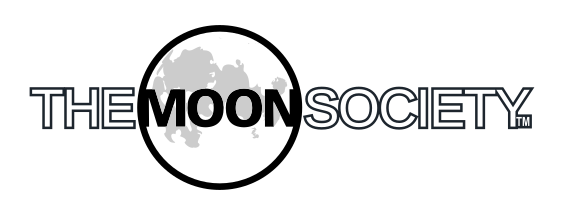Introducing a new Moon Society Publication
THE LUNAR ECONOMY
Relevant articles from Moon Miners’ Manifesto years 1-25 (1986-2011)
http://www.moonsociety.org/publications/mmm_themes/mmmt_LunarEconomy.pdf
A Lunar Economy will rest on 3 foundations:
- Elements fairly abundant on the Moon: Iron, Aluminum, Magnesium, Titanium – the 4 “engineering metals” – plus Oxygen, Silicon, and Calcium. Any products that can be made for local use from these and other available elements will represent significant cost savings over “upports” of equivalent items made on Earth’s surface.
- The Moon sits on the shoulder of Earth’s Gravity Well so that “downports” to markets in Low Earth Orbit (space stations, space hotels, space industrial parks, etc.) and to Geosynchronous Earth Orbit (space platforms hosting hundreds of satellites each; solar power satellites and power relays) will have a 23:1 cost advantage in terms of shipping costs (fuel, size of rockets needed) over equivalent items made on Earth’s surface.
- The MUS/cle Strategy – Lunar industries focus on items that are Massive, Unitary (many needed), and Simple, while things that are complex. lightweight, and/or electronic are shipped up from Earth. http://www.moonsociety.org/publications/mmm_papers/muscle_paper.htm
Here we bring together the many articles that have developed these themes through the first 25 years of Moon Miners’ Manifesto.
Topics include a non-throwaway space transportation system; new material concepts (glass fiber – glass matrix composites, basalt fiber – basalt matrix composites); outpost design and expansion; human-robot synergies and teleoperation of robotic equipment and robonaut avatars; evolution from crews on temporary assignments to permanent residents; lunar industries of all sorts; lunar-appropriate modular architecture systems, private enterprise including home-based startups; arts and crafts; tourism; the export-import equation; trade with an early Mars frontier and asteroids; industrial diversification; recycling; “stowaway” imports; prize real estate; a thorium-based nuclear fuels industry; “spinning up” technologies useful on the Moon here on Earth for terrestrial profits now; volcanic gas traps; outpost location with access to all the key elements and materials – and more.
There is no effort whatsoever to organize this material by topic. Rather, the original articles from Moon Miners’ Manifesto are included in chronological order, issue # by issue #.
The principle contributors of these articles are Peter Kokh (MMM Editor); David Dietzler of Moon Society St. Louis, and David Dunlop. The editor is extremely grateful to the two Daves for their significant contributions as well as to other contributors.
This volume is 199 pages long, with illustrations from the original articles.
The idea of lunar settlement and industrialization evokes skepticism, even derision from many, most of whom have bothered to take only a very superficial look at the possibilities and opportunities. We hope after you read through these articles, you will find yourself encouraged.
We WILL develop the lunar frontier! And we will do so with environmental respect. While that aspect is not touched on directly in this volume, you will find plenty on this topic in another MMM Theme Issue: Eden on Luna at http://www.moonsociety.org/mmm
